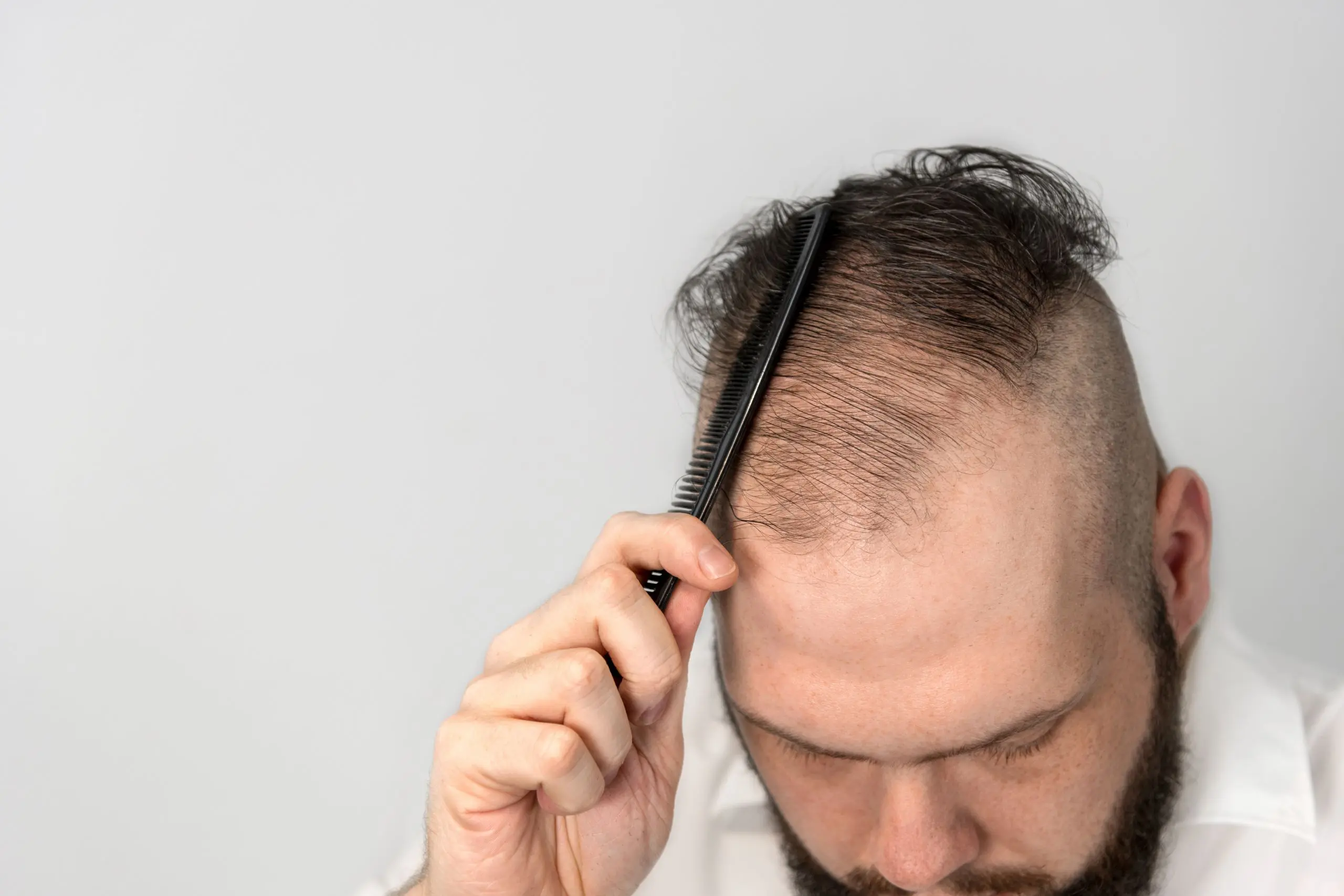Androgenetic Alopecia
The most common cause of hair loss in men and women
Androgenetic alopecia – also called male-pattern baldness and female-pattern baldness – is the most common cause of hair loss in men and women.
In men, hair begins to recede at the front hairline while hair at the crown of the head begins to thin, eventually leaving hair in that familiar U-shape around the sides and back of the head.
In women, the hair loss is much more diffuse – it tends to thin all over the scalp. But it’s no less distressing, and it affects an estimated 30 million American women.
What Causes This Type of Hair Loss?
To understand how androgenetic alopecia occurs, it’s important to understand how our hair grows. Each human scalp hair grows about a half-inch per month for two to six years – what’s called the anogen, or growth, phase. The hair rests at that length for one or two weeks (the catagen phase), then falls out in the telogen phase (we normally lose 50 to 100 hairs a day as part of this process). Soon afterward, a new hair begins growing in its place and the anogen phase begins again. About 85 percent of our hair is in the anogen phase at any given time.
This cycle, however, can be interrupted by hormones called androgens, which include testosterone and dihydrotestosterone (DHT). When elevated levels of DHT are present in a man’s scalp, the hair follicles shrink and hair growth stops. This type of baldness is generally hereditary; however, contrary to popular belief, it’s not inherited solely from your mother’s father. The male pattern baldness gene can be passed down through your mother or father – or both.
Even though these are “male” hormones, women’s bodies produce them in small amounts. When testosterone meets up with certain enzymes in the hair cells of someone with a genetic predisposition to hair loss, it converts to DHT, which causes hair follicles to shrink and die in women as well as men.
Androgenetic alopecia in women also can be linked to other hormone-related conditions including polycystic ovary syndrome, pregnancy, menopause, and taking certain birth-control pills.
What Can I Do About It?
Just because you may have a genetic predisposition to hair loss, you do have options when it comes to preventing baldness and restoring a lush and healthy head of hair. Please read more about Hair Transplantation and Non-Surgical Treatment Options for Hair Loss.

















